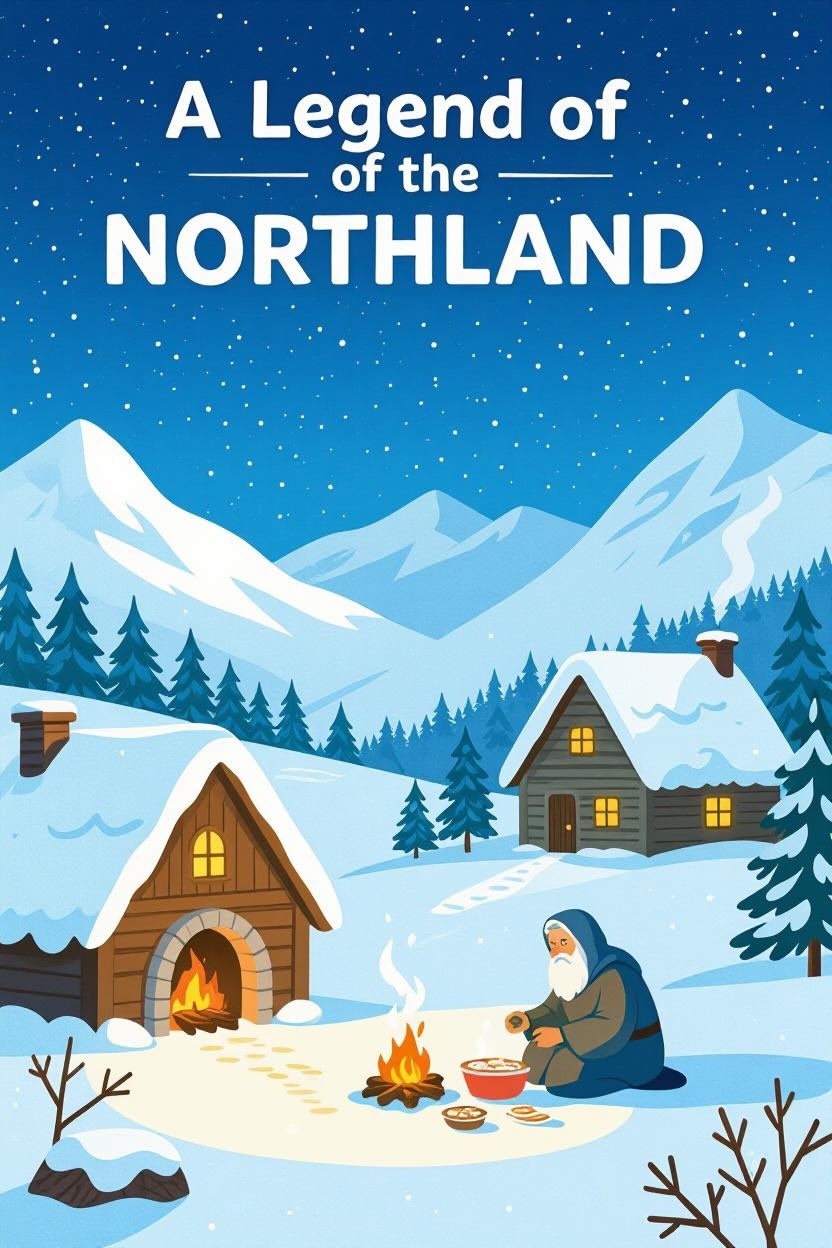Complete Solutions and Summary of A Legend of the Northland - NCERT Class 9, Beehive, Poem 5 - Summary, Questions, Answers, Extra Questions...
Detailed summary and explanation of Poem 5 'A Legend of the Northland' with all question answers, extra questions, and solutions from NCERT Class IX, Beehive.
Updated: 2 months ago

Introduction
'A Legend of the Northland' is a poem by Phoebe Cary that tells the story of an old woman who is punished by Saint Peter for her greed and selfishness. It’s a moral story that teaches the importance of kindness and generosity.
Summary in English (200 words):
The poem narrates the story of an old woman who refuses to share even a small cake with Saint Peter, who is weak and hungry. Angered by her greed, Saint Peter curses her to live as a bird that must peck at wood all day to get its food. The woman is transformed into a woodpecker as a result. The poem conveys a simple moral: selfishness and greed lead to one's downfall.
Summary in Hindi (200 words):
'उत्तर की एक पौराणिक कथा' एक कविता है जिसमें एक बूढ़ी औरत की कहानी बताई गई है जिसे उसकी लालच और स्वार्थ के लिए सेंट पीटर द्वारा सजा दी जाती है। सेंट पीटर उसे एक पक्षी में बदल देते हैं, और वह पक्षी दिन भर लकड़ी में छेद करके भोजन प्राप्त करती है। यह कविता हमें सिखाती है कि स्वार्थ और लालच का परिणाम हमेशा विनाशकारी होता है।
Thinking about the Poem
-
1. Which country or countries do you think “the Northland” refers to?
The Northland likely refers to countries in the far north, such as those in the Arctic region, like Norway, Sweden, or Canada. These places are known for their cold climates and snowy landscapes.
-
2. What did Saint Peter ask the old lady for? What was the lady’s reaction?
Saint Peter asked the old lady for a cake as he was hungry and weak from fasting. However, the lady was so greedy that she did not want to give him even a small cake, although she had plenty of dough.
-
3. How did he punish her?
Saint Peter punished the old lady by turning her into a woodpecker. He said that since she was so selfish with her food, she would have to peck at wood for her food for the rest of her life.
-
4. How does the woodpecker get her food?
The woodpecker gets her food by pecking at the hard, dry wood, as Saint Peter had cursed her to do.
-
5. Do you think that the old lady would have been so ungenerous if she had known who Saint Peter really was? What would she have done then?
If the old lady had known that the man asking for food was Saint Peter, she probably would not have been so ungenerous. She might have given him food out of fear or respect, knowing his power as a saint.
-
6. Is this a true story? Which part of this poem do you feel is the most important?
This is not a true story but a legend. The most important part of the poem is when the old lady is transformed into a woodpecker as a consequence of her greed. It highlights the moral lesson of the poem.
-
7. What is a legend? Why is this poem called a legend?
A legend is a traditional story, often regarded as historical but unauthenticated. This poem is called a legend because it tells a moral tale of Saint Peter and the old lady, which is passed down through generations but is not a true story.
-
8. Write the story of ‘A Legend of the Northland’ in about ten sentences.
Once, in the Northland, Saint Peter was fasting and became very hungry. He came upon an old lady baking cakes and asked her for a piece of cake. The old lady, though having plenty, was very greedy and kept making smaller cakes, but still refused to give him one. Saint Peter was angry at her greed and cursed her to become a woodpecker. From then on, she had to peck at wood for her food. The people of the Northland still see woodpeckers in the trees, remembering the legend of the old woman who was turned into a bird because of her greed.
II.
-
1. Let’s look at the words at the end of the second and fourth lines, viz., ‘snows’ and ‘clothes’, ‘true’ and ‘you’, ‘below’ and ‘know.’
We find that ‘snows’ rhymes with ‘clothes’, ‘true’ rhymes with ‘you’, and ‘below’ rhymes with ‘know’. Some more rhyming words from the poem include ‘more’ and ‘door’, ‘wood’ and ‘food’, ‘fire’ and ‘desire’.
-
2. Go to the local library or talk to older persons in your locality and find legends in your own language. Tell the class these legends.
This activity encourages students to explore legends in their own culture and language. They can share stories from their regions that contain moral lessons or folk tales passed down through generations.
About the Author (Poem - A Legend of the Northland)
Phoebe Cary (1824–1871) was an American poet and the younger sister of poet Alice Cary. Both sisters were known for their writing and poetry in the mid-19th century, and their work gained popularity in both literary circles and mainstream audiences. Phoebe Cary wrote poems that often contained moral lessons or reflected upon themes of kindness, generosity, and human behavior. One of her most famous works, A Legend of the Northland, is a ballad that teaches a lesson about greed and selflessness. Through simple language and narrative, Cary’s poems often sought to engage readers of all ages with themes that carried deep ethical and moral significance.

Group Discussions
No forum posts available.


